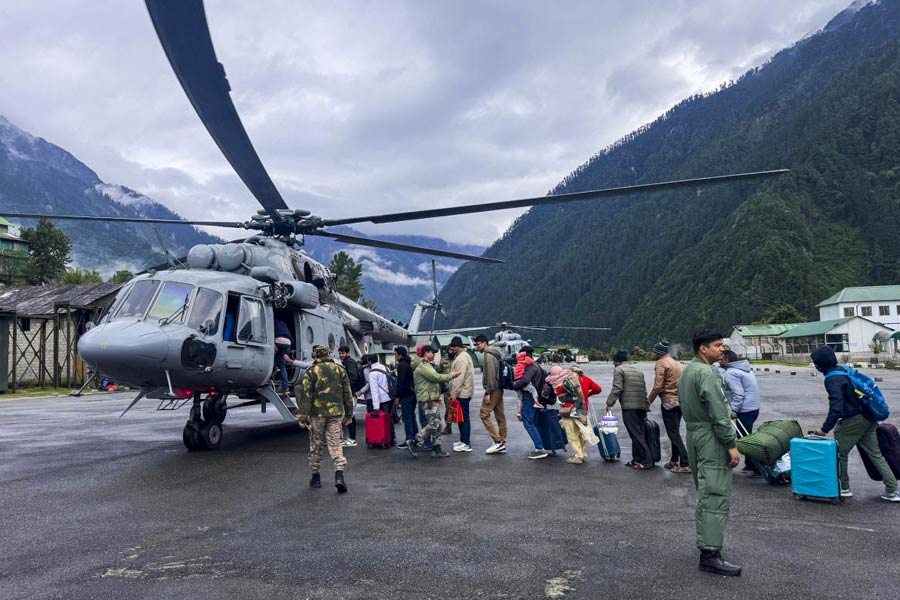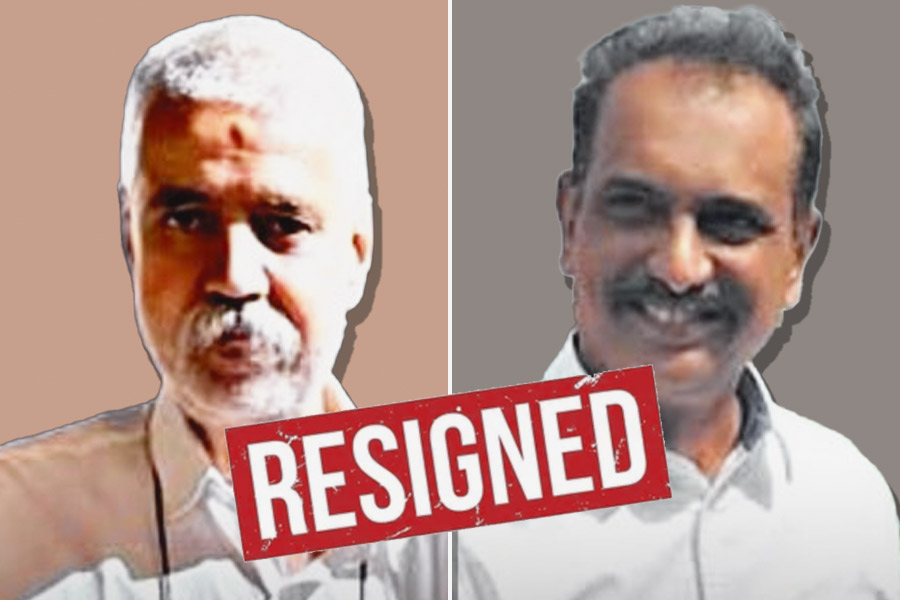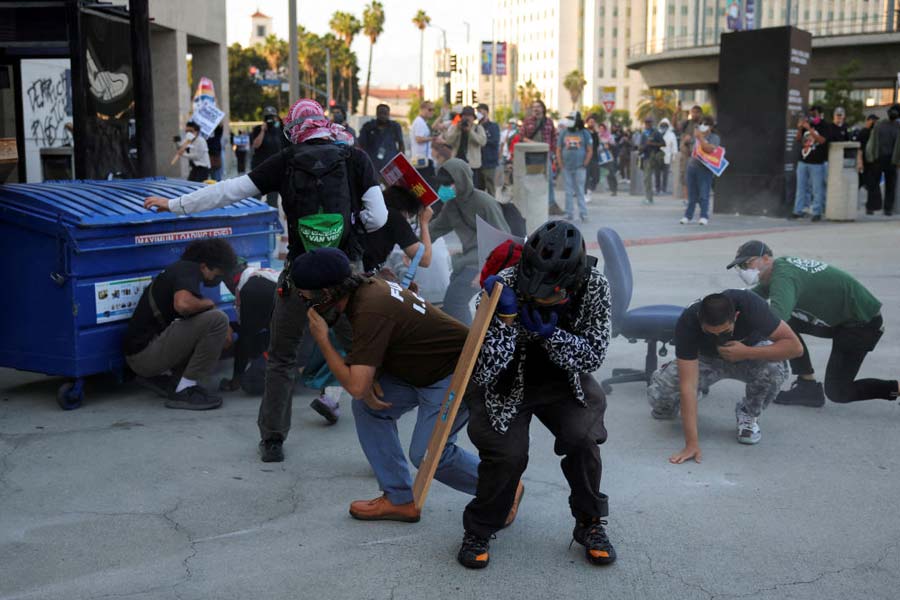You read a good novel, you want to read others written by the same author and find out more about him or her. I read a very good one titled The Hero's Walk by Anita Rau Badami, published a few months ago by Bloomsbury. Most novels have a few lines on their jackets about the author. This had nothing besides excerpts of a few reviews comparing it to V.S. Naipaul's A House for Mr Biswas, novels by Rohinton Mistry and Shauna Singh Baldwin. It was described as 'heart breaking'. It also mentioned an earlier novel with an enigmatic title, Tamarind Mem.
I felt very frustrated and set out to nearby Khan Market, which has six bookstores, to see if I could lay my hands on another copy of The Hero's Walk which had been lent to me by a friend and whatever else I could by the author. I drew a blank. Only Rachna Davidar, owner of the Book Shop, was familiar with the name. Tamarind Mem had been sold out.
From The Hero's Walk I surmised that Anita Rau Badami was from Karnataka, now living in Vancouver, perhaps with a Canadian husband. I was wrong. My friend who had recommended the novel to me got more authentic information from the internet. Anita Rau, born in Rourkela, is a Kannadiga, educated in Madras and living in Canada with an Indian husband. She wanted to write books for children but while doing a course in creative writing was persuaded to write for adults. So came the two novels.
The plot of The Hero's Walk is very simple. It is about an orthodox family living in a town named Totupuram, adjoining Tamil Nadu, on the Bay of Bengal. The family lives in a large house on Brahmin Street. The house was built by a prosperous lawyer who then took on a mistress he lodged a few houses down the same street. He died leaving very little besides a disgruntled widow, a son Sripathi and a daughter Putti. Sripathi failed to become a doctor as his parents hoped and took on a poorly paid job as a copywriter in an advertising agency. He owed money to his bank and friends. His chief pre-occupation was to write letters to The Hindu signed Pro bono Publico. He collected pens to do so. His wife Nirmala bore him a daughter, Maya, and a son, Arun. Maya grows into a beautiful girl and wins a scholarship from a Canadian university. Before she leaves Totupuram she is engaged to the son of a well-bred Brahmin family. In Canada she falls in love with a Canadian boy in her university and marries him. Sripathi Rao is humiliated and desolate. He cuts off all contact with his daughter. Maya has a daughter Nandana. When she is seven, her parents are killed in a car crash. A mortified Sripathi has to travel to Vancouver and bring back a most reluctant granddaughter and the ashes of his discarded daughter and Canadian son-in-law whom he had never seen.
Most of the novel is based in Totupuram and revolves round Sripathi's family living in their ancestral home: His sister, Putti, who is a spinster at 40, a cranky old mother who quarrels with everyone, a good-for-nothing son, Arun, and a grand child pining to get back to Canada. Their neighbour is a milk-vendor who becomes an MLA and a millionaire. His son, who eyes high-caste Putti, succeeds in marrying her to the disgust of Putti's crazy mother. It is not the story alone that keeps the reader rivetted to the novel but the way Badami etches her characters and gives the most trivial event dramatic significance. She has a puckish sense of humour and a charming way of handling Kannada-English.
It ends on a philosophic note. Sripathi and her son take the ashes of Sripathi's mother to immerse in the sea on the very spot where they had earlier immersed the ashes of Maya and her Canadian husband. The evening sinks into a moonlit night. Arun asks his father to stay on the seashore. Late at night when the beach is deserted they watch hundreds of turtles come out of the sea, dig holes in the sand, lay their eggs, cover up the pits with their flippers and waddle back into the sea. They have been doing so ever since life began on earth, reminiscent of the lines:
The waves with their little white bands
Erase the footprints from the sands
The tide rises,
The tide falls.
This has been a good year for Indian writing in English. I can count at least six novels which will continue to be read in the years to come. The most memorable will be Anita Rau Badami's The Hero's Walk.
Courage under fire
Her name would be known the world over to people who take an interest in current events, read periodicals or watch TV. She's been in the print and electronic media for over 20 years, in the forefront covering the Afghan civil war, the Naga rebellion, the Indo-Pak confrontation on the Siachen glacier and much else. She has been on the staff of The Indian Express, India Today, Time and CNN. She has won more awards for journalism, national and international, than any other Indian journalist.
Anita Pratap nee Simon was born in Kottayam, Kerala, to Syrian Catholic parents. Her father was an executive with Tata and was posted in different cities. In 11 years, Anita changed seven schools. She took her Senior Cambridge examinations from Loreto House, Calcutta winning all the prizes and topping the list in English. She joined Miranda House, New Delhi. She again topped the list when she took her BA honours examination, which she passed in 1978, in English literature. An academic career was wide open to her. Being a restless person she opted for journalism and took a diploma from Bangalore University. She was immediately taken on by Arun Shourie, then editor of The Indian Express. After a short stint in Delhi she asked to be transferred to Bangalore where her parents were living. There she met Pratap Chandran, a senior reporter, and married him. He was Hindu, she Christian. But this posed no problems with either set of parents since both were Malayalis. Anita Simon became Anita Pratap and a year later their son Zubin was born.
The marriage was soon on the rocks. The divorce was fiercely contested over the custody of the child, with Anita ultimately winning custody over Zubin. Having done all she wanted to do with journalism, both print and broadcast, Anita turned to making documentary films. She would still have been making documentaries but for a chance encounter with a stranger at a cocktail party at the Maurya Sheraton. She left the party early as did the stranger. They exchanged greetings while waiting for their cars. 'Why are you leaving early?' he asked. 'I have to be with my son. He is waiting for me. And you?' He replied, 'I too have a son at home waiting for me.' They got talking and realized they had much in common: Both were divorcees with sons to look after. They decided to meet again. He was H.E. Arne Walther, Norwegian ambassador to India and is 15 years older than her. Anita agreed to marry him. Now she is Her Excellency Anita Walther.
I once asked her if she had at any time been close to death during her years as a reporter. 'Many times', she replied with a smile. 'In Afghanistan, with bombs falling a few feet from me. In Sri Lanka, with bullets whizzing past my ear. But once I was on the hunt for an authentic story, I lost all fear and went for it.'
It occurred to me that quite a few Indian women journalists have shown more guts in the face of danger than their male counterparts: Tavleen Singh bearding Bhindranwale in his own den, Pinki Virani cocking the snook at Bombay's underworld dons, Barkha Dutt interviewing Pakistanis when tensions between the two countries were at the highest.
Anita Pratap has recorded her adventures in Island of Blood: Frontline Reports from Sri Lanka, Afghanistan and Other South Asian Flashpoints.
 Saturday, 07 June 2025
Saturday, 07 June 2025










